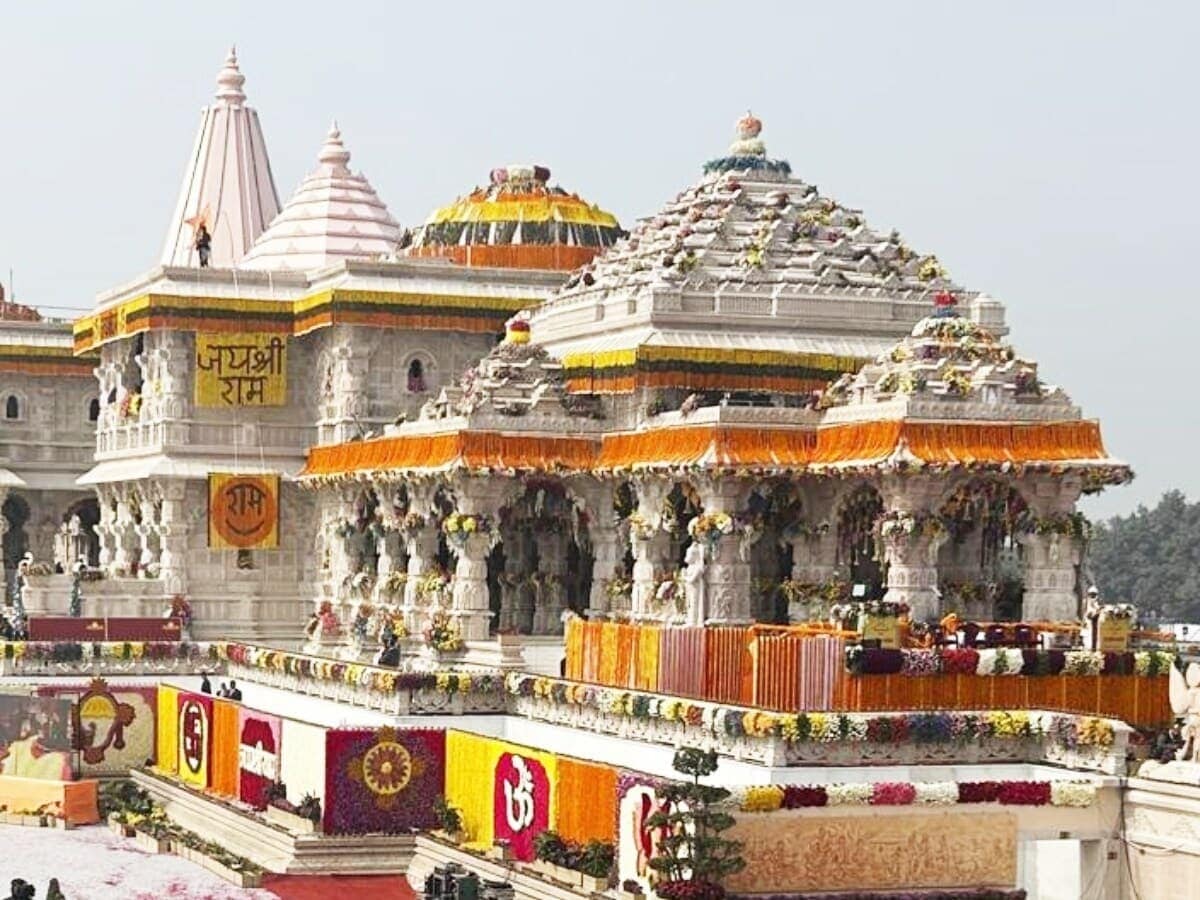Ram Mandir in Ayodhya – Symbol of Faith, History & Unity
The Ram Mandir in Ayodhya, Uttar Pradesh, is one of the most revered and awaited religious constructions in India. Located at the sacred site believed to be the birthplace of Lord Rama, the temple stands as a powerful symbol of faith, cultural heritage, and spiritual unity for millions of Hindus. With its deep historical roots and modern architectural vision, the Ram Mandir is more than just a temple—it’s a monumental expression of devotion and national identity.
Historical Background of Ram Mandir
The journey of the Ram Mandir is as profound as its spiritual significance. The site was previously occupied by the Babri Masjid, built in the 16th century. In 1949, idols of Rama and Sita were reportedly placed inside the mosque, which led to decades of legal and communal disputes. The situation escalated until the mosque was demolished in 1992, triggering nationwide unrest.
In a landmark verdict in November 2019, the Supreme Court of India ruled in favor of the Hindu claimants, allowing the construction of a temple at the disputed site. The court also directed the government to allocate 5 acres of land in Dhannipur, Ayodhya, to the Muslim community for building a mosque. This verdict laid the foundation for a new era of peace and reconciliation.
Bhoomi Poojan Ceremony
The Bhoomi Poojan or ground-breaking ceremony was performed by Prime Minister Narendra Modi on August 5, 2020, marking the official beginning of the temple’s construction. The project is being managed by the Shri Ram Janmabhoomi Teerth Kshetra Trust.
Construction Progress and Completion Timeline
The construction of the Ram Mandir is progressing rapidly with meticulous attention to detail. The temple complex is being built using traditional techniques and high-quality sandstone. As per the latest updates:
- January 22, 2024: The Pran Pratishtha (consecration) of the idol of Ram Lalla in the sanctum sanctorum was completed and inaugurated.
- June 5, 2025: Consecration of Raja Ram and other deities in eight newly constructed temples within the complex.
- By September 2025: Full completion of the temple complex, including the boundary wall, auditorium, ramparts, and shoe racks, is expected.
Some delays are attributed to a shortage of skilled stone carvers, but the trust remains committed to maintaining architectural integrity and spiritual sanctity.
Significance of the Ram Mandir
The Ram Mandir is not just a religious structure—it is a symbol of India’s cultural and spiritual heritage. Lord Rama, the hero of the Ramayana and an avatar of Lord Vishnu, is revered as the ideal ruler, son, and human being. His birthplace, Ayodhya, is considered one of the seven most sacred pilgrimage sites (Sapta Puri) in Hinduism.
For devotees, the temple signifies the victory of dharma (righteousness) and the fulfillment of a long-standing spiritual aspiration. It is expected to become a major center for religious tourism, education, and cultural exchange.
Educational Insights for Students (Class 7th to 12th)
Understanding the Ram Mandir’s journey offers valuable insights into Indian history, law, and religion—making it a relevant topic for students across JAC, CBSE, and ICSE boards. Students preparing for competitive exams like JEE and NEET can benefit from the following educational takeaways:
NCERT-Based Learning
- Class 10 Social Science: Civics and the role of the judiciary (Supreme Court verdict)
- Class 11 History: Medieval India – Mughal architecture and religious harmony
- Class 12 Political Science: Constitutional values, secularism, and legal frameworks
Study Tips Inspired by Ram Mandir’s Journey
- Patience and perseverance: Just like the decades-long wait for the temple, students must stay focused and persistent in their studies.
- Strategic planning: The temple’s phased construction shows the importance of planning—a critical habit for exam preparation.
- Faith and values: Belief in oneself and ethical conduct are as important in education as they are in spiritual life.
Frequently Asked Questions (FAQs)
- Q: Where is the Ram Mandir located?
A: It is located in Ayodhya, Uttar Pradesh, at the site believed to be the birthplace of Lord Rama. - Q: When was the Ram Lalla idol consecrated?
A: The Pran Pratishtha ceremony was held on January 22, 2024. - Q: Who is building the Ram Mandir?
A: The construction is overseen by the Shri Ram Janmabhoomi Teerth Kshetra Trust. - Q: What is the significance of Ayodhya?
A: Ayodhya is one of Hinduism’s holiest cities and the birthplace of Lord Rama.
Join JeetMantra – Learn More About India’s Cultural & Religious Heritage
At JeetMantra, we believe in nurturing not just academic excellence but also cultural awareness. Our specially curated courses for JEE, NEET, CA, CS, and CMA preparation include references to Indian history, ethics, and values that shape well-rounded students. Whether you’re from Class 7th to 12th, we help you connect your studies to real-world knowledge and spiritual wisdom.
Want to know more? Chat with our JeetMantra bot to get your questions answered with the help of AI: 9942249242
Visit: www.jeetmantra.com or Call: 9229140922 / 9229163773
Limited Seats Available – Join the Adventure Today!
Hashtags: #RamMandir #Ayodhya #LordRam #RamLalla #RamJanmabhoomi #HinduHeritage #JeetMantra #JEEPreparation #NEETPreparation #TopCoachingRanchi #CA #CS #CMA #AyodhyaHistory
SEO Keywords: Ram Mandir Ayodhya, Lord Rama birthplace, Ram Janmabhoomi history, Ram Mandir construction update, Supreme Court Ram Mandir verdict, top coaching class in Ranchi, JEE preparation Ranchi, NEET preparation Ranchi, CA coaching, CS course, CMA classes, JeetMantra coaching Ranchi




